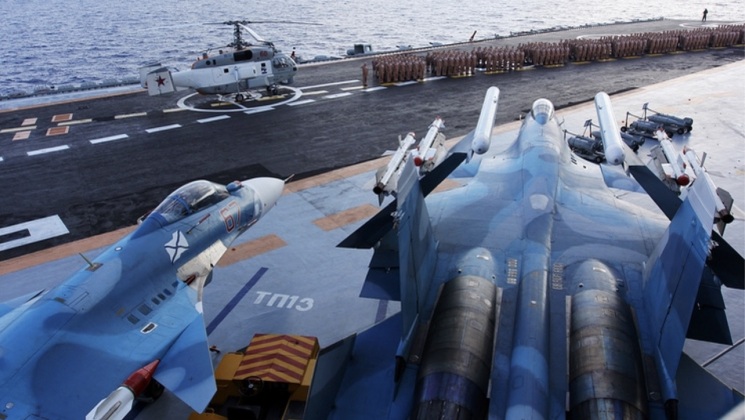News
New Automation on Russian Aircraft Carrier Cuts Crew Numbers By Over 20 Percent
After multiple delays and accidents the Russian Navy is expected to return its sole aircraft carrier the Admiral Kuznetsov to frontline service in 2024, with a major step towards achieving this taken in February as the ship finally departed dry dock after five years in a long overhaul. A range of enhancements to the ship have been speculated, including modernisation of propulsion systems, sensors, protection systems, electronics and at least a part of its fighter air wing, and possibly even replacement of its P-700 cruise missiles with more modern Zicron hypersonic missiles. Perhaps the most notable confirmed enhancement to the Admiral Kuznetsov, however, has been a major increase in levels of automation, which will facilitate a contraction in crew numbers from 1900 to just 1500 personnel. This will almost certainly significantly lower the ship’s operational costs, while conserving 400 professional servicemen, since conscripts seldom serve in the Navy, for other assignments. Achieving greater levels of automation and major crew reductions have been a major trend in all modern navies, a notable example being the U.S. Navy’s Gerald Ford Class supercarriers’ approximately 10 percent crew reduction compared to ships from the preceding Nimitz Class from around 5050 to approximately 4350. The fact that the Kuznetsov was able to achieve over twice this proportional reduction through modernisation, rather than commissioning of an entirely new ship, thus represents a very significant achievement.

The Kuznetsov was launched six years before the Soviet Union’s disintegration and managed after considerable delays to enter service in the 1990s, although its record of multiple accidents, followed by a loss of two fighters due to landing mishaps during its sole combat operation in Syria in 2016 have done much to tarnish its reputation. Nevertheless the ship class’ high potential has been demonstrated by the construction of two further carriers based on the same design in China, the Liaoning and Shandong. These entered service in 2012 and 2019 with far newer sensors, electronics, powerplants and aircraft complements among a truly comprehensive range of other improvements, and have seen no similar questions regarding their reliability. The latest overhaul of the Kuznetsov has been speculated to have received Chinese support, with the much greater levels of investment which China has been able to put into enhancing the ship class placing it in a strong position to provide at least consultation advice on how to improve the class. The overhaul, despite its very limited budget, is expected to partially reduce the performance gap between the older Soviet ship and the new Chinese vessels.












